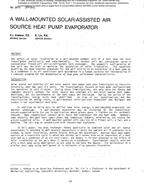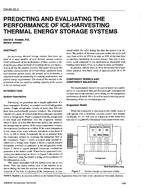A family experiencing health problems installed a carbon monoxide (CO) detector. The detector alarm was activated several times. The utility company and heating contractors verified the presence of CO but were unable to locate the source. Testing determined the source was carbon monoxide emissions from a car in the attached garage. Although the overhead garage door was open while the vehicle warmed up, high concentrations of carbon monoxide remained in the garage after the car was backed out and the door shut. Pressure differences between the garage and the house forced carbon monoxide into the house. Carbon monoxide concentrations were measured in the tailpipe of the vehicle, in the garage, and in the house. House and garage leakage and pressure differences were measured. Operation of a garage exhaust fan effectively limits entry of carbon monoxide into the house as long as the house/garage door is closed.
AUTHOR: Thomas H. Greiner, Ph.D., P.E., Charles V. Schwab, Ph.D.
CITATION: Thermal Performance of the Exterior Envelopes of Buildings VII
KEYWORDS: December, Florida, 1998
YEAR: 1998
Citation: Thermal Performance of the Exterior Envelopes of Buildings VII
Product Details
- Published:
- 1998
- File Size:
- 1 file , 130 KB
- Product Code(s):
- D-8099


